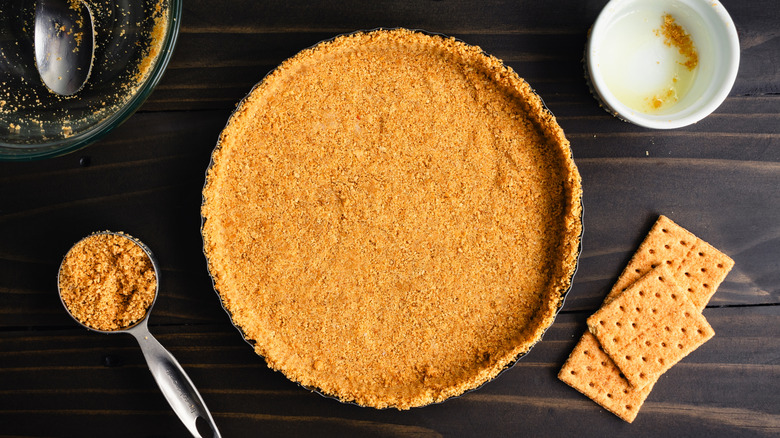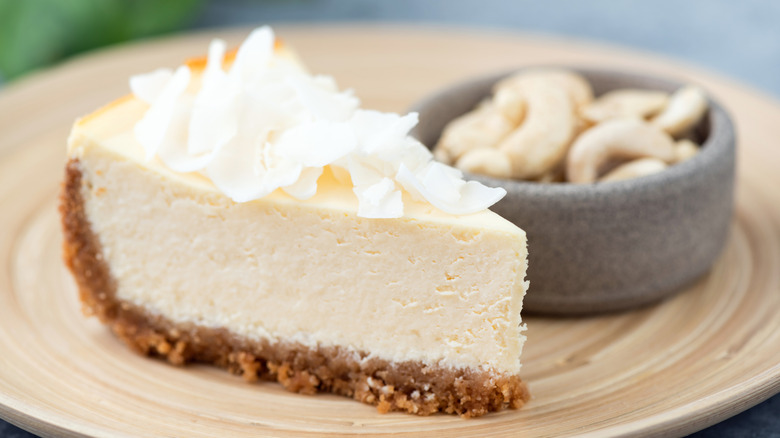The Ingredient You Should Never Leave Out When Making Graham Cracker Crust
Famed for supporting cheesecakes, the humble graham cracker crust is a family favorite. While they're widely accessible in stores, they are also simple and fun to make at home, not to mention more affordable and customizable. The make up is simple: graham crackers, sugar, and melted butter. While you can always add more detail, it's important not to mess with the original formula, especially the sugar.
Butter can be swapped out for a dairy-free alternative, and there are plenty of cookie alternatives to the OG graham crackers. But sugar is a hard one to replace, let alone omit entirely. When heated, sugar melts and binds with any surrounding liquid (in this case, butter). This enhances the overall stability of the crust, which is important as it forms the base for a disproportionate amount of filling. Without sugar, the crust would be too crumbly and struggle to stick together, especially when slicing the cake. Aside from this, sugar obviously provides an added sweetness to the mix which graham crackers and butter alone can't provide. And that's never a bad thing when baking a delectable dessert.
Ways to enhance a graham cracker crust
Graham crackers have a surprisingly robust history since their invention in the mid-19th century. Their role in pie crusts began in the 1920s, and since then have served as the perfect no-nonsense base for many desserts. Still, there's always room for improvement, and even seasoned bakers still need to tweak their techniques. One common problem is a soggy crust due to excess moisture, but this can actually be easily remedied by a layer of aluminum foil.
In terms of elevating a graham cracker crust, the sky's the limit. Spices like cinnamon and nutmeg are excellent fall additions, and filling that crust with this cottage cheese pumpkin cheesecake will be the perfect welcome to the cooler seasons. Browning your butter is also a great way to achieve a richer, slightly nuttier flavor in your crust, and all it takes is a couple more minutes on the stove (though also a close eye to avoid it burning). When dealing with a simple recipe, small tweaks go a long way.


